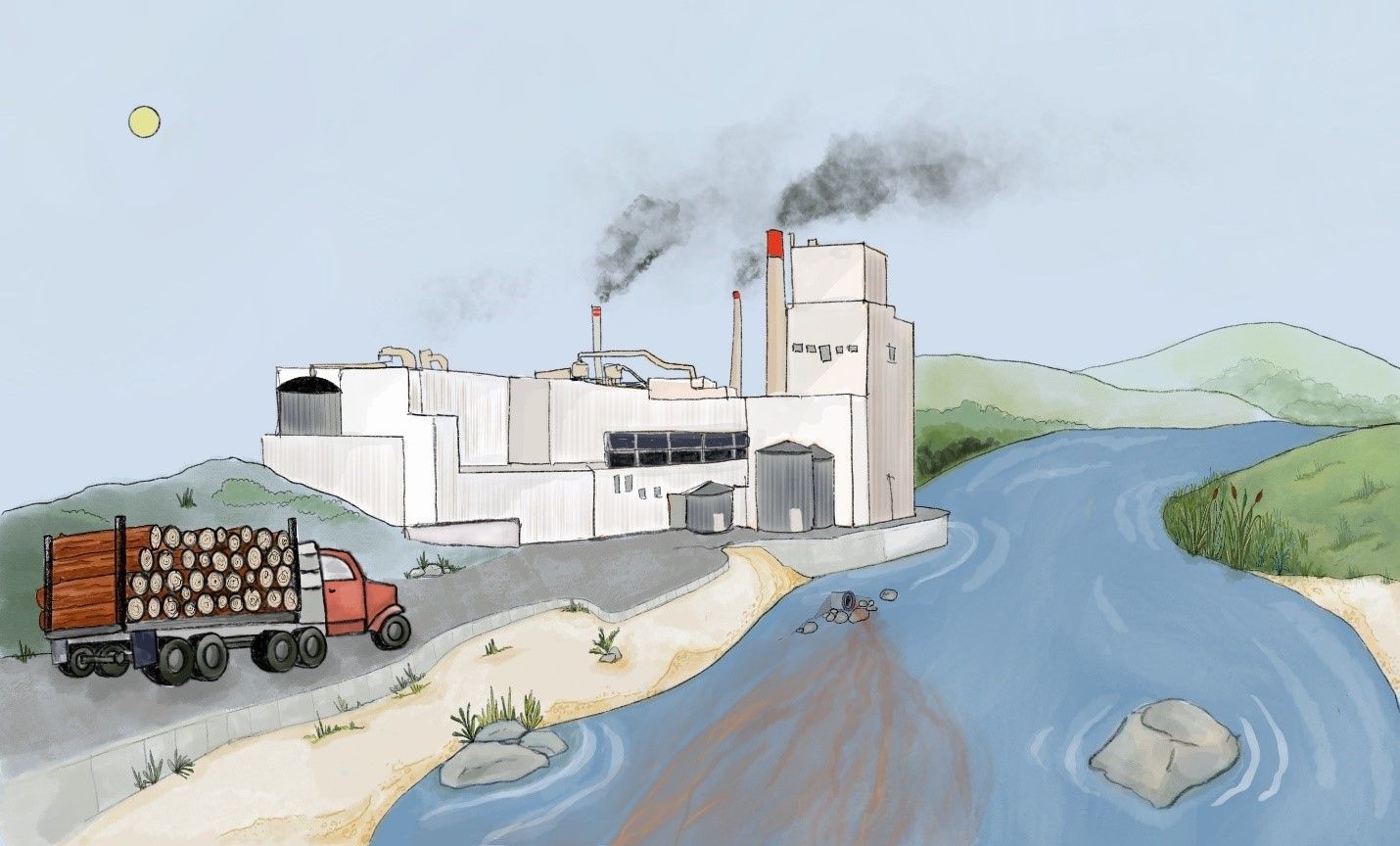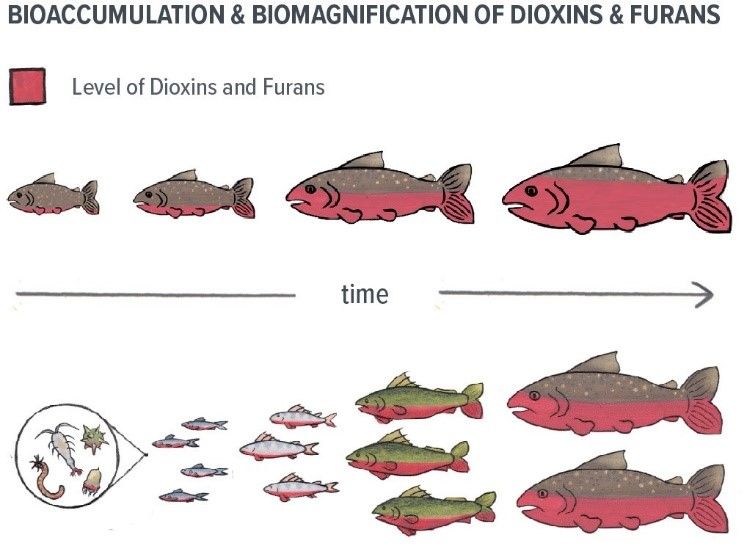Dioxins and furans tend to accumulate in the sediments and in the tissues of some aquatic organisms, rather than in the water. For this reason, national guidelines apply to the concentration of these chemicals in sediment, which should not exceed 0.85 ng/kg over the longer term, or 21.5 ng/kg in the short term. National guidelines are compared to a toxicity-related value that needs to be calculated from measured data, and not directly to measured concentrations.
What are they?
Dioxins and furans are a group of chemicals that are products of combustion (including from forest fires, waste incineration, power generation, metal production, and other fuel burning), chlorine bleaching of pulp and paper, and the manufacture of other chemicals including pesticides. Once released to the environment, dioxins and furans do not easily break down and are considered persistent organic pollutants (POPs).
The more formal name for dioxins is polychlorinated dibenzo-p-dioxins (PCDDs), and for furans is polychlorinated dibenzofurans (PCDFs). Some dioxins and furans are highly toxic and others much less so.

Pulp and paper mill effluents have historically been a significant source of dioxins and furans to freshwater in Canada. Improved regulations have reduced their release. However, due to their persistence, dioxins and furans released in the past are often still present in the environment today.
Why do they matter?
Dioxins and furans are present everywhere in the environment, although sometimes at very low levels. Certain types of dioxins and furans are highly toxic to plants and animals, including those that live in water. In humans, exposure to dioxins and furans can cause serious illness, including cancer.

Dioxins and furans can accumulate in the bodies of organisms (bioaccumulate) and in sediments on the bottom of lakes and rivers. Dioxin and furan concentrations progressively increase (biomagnify) up the food chain. so that concentrations are relatively high in the largest fish and in aquatic mammals.
How are they measured?
Dioxins (PCDDs) and furans (PCDFs) can be measured in water, in sediments and in the tissues of organisms like fish. These samples must be submitted to a lab for analysis. Dioxin and furan concentrations are usually reported individually by type, or grouped. The most toxic dioxin is 2,3,7,8-tetrachlorodibenzo-p-dioxin, or TCDD.
More organic matter in sediments makes it more likely for the sediment to accumulate dioxins and furans, if exposed.
Related parameters: PCBs (polychlorinated biphenyls).